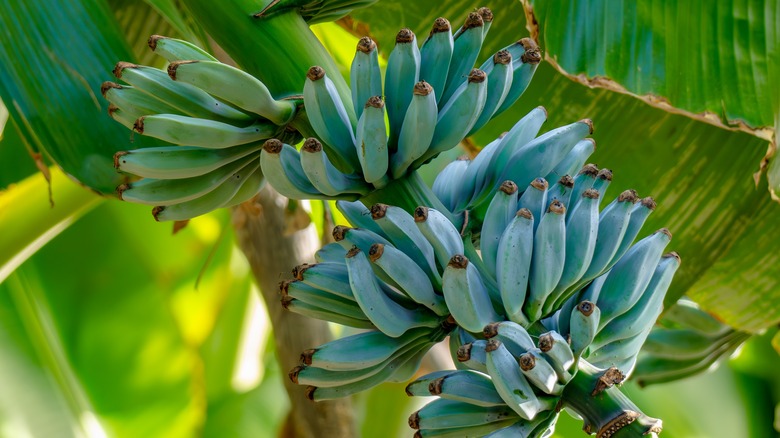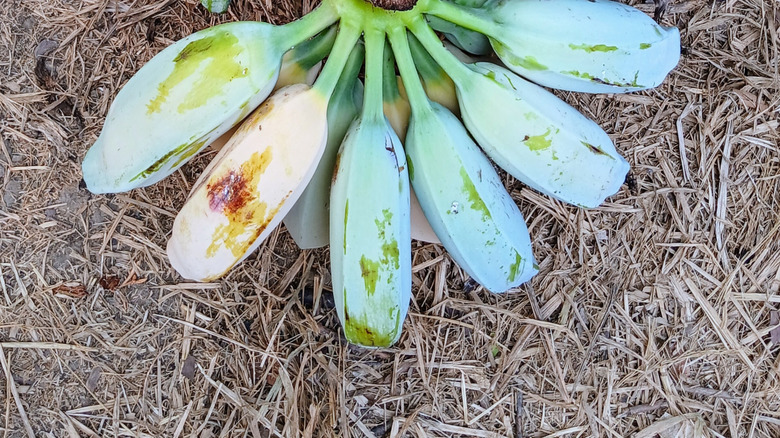Where Are Blue Java Bananas Actually Grown?
We may receive a commission on purchases made from links.
American consumers can select from seemingly dozens of apples and a multitude of tomato cultivars at any old grocery store, but the banana section isn't known for its variety. In fact, we're all eating clones of the exact same banana. So when a bright blue banana that allegedly tastes like soft serve ice cream became the talk of TikTok a few years ago, people naturally went bananas for the unique tropical fruit.
First, let's set some things straight. Many photos of the viral Blue Java banana's vibrant turquoise peel turned out to be edited — it does take on a bluish tint during ripening, but it's not quite so dramatic. It turns yellow when fully ripe, and is nicknamed the "ice cream banana" more for its creamy, custardy texture than its precise emulation of vanilla soft serve. Still, by many accounts, the eye-catching Blue Java bananas are delicious and well worth trying, which has naturally led many to wonder where, exactly, they are grown.
Blue Java bananas thrive in tropical and subtropical climates across Southeast Asia and the South Pacific. Leading producers include Indonesia, Malaysia, the Philippines, and Hawaii. Unfortunately, the unique fruits are unlikely to be found in many continental U.S. grocery stores because of their short shelf life and high disease vulnerability, which makes them too expensive and impractical for large-scale commercial production.
How to get Blue Java bananas
Americans who'd like to get their hands on Blue Java bananas have a couple of options. If you live in a tropical state like Florida or Arizona (or better yet, Hawaii), you may be able to grow the fruit yourself. Blue Java banana trees can be purchased online and are relatively easy to maintain in proper conditions. If you live north of Florida or don't have a green thumb, you're probably better off ordering Blue Java bananas online.
Various online retailers will send the sought-after banana straight to your door, but be warned that it won't come cheap or fast — a single fruit can cost nearly $50, a price that would shock even Lucille Bluth ("it's a banana, Michael, how much could it cost?") and which makes Japan's $10 banana look like a steal. Perhaps more significantly, most retailers have a years-long waitlist due to the fruit's limited availability. Still, if you're willing to splurge, you could order a Blue Java banana as a sweet surprise for your future self. If you can't bring yourself to pay a double-digit price tag and wait years for a Blue Java banana, we recommend consoling yourself by decoding regular old bananas to make perfect banana bread.

